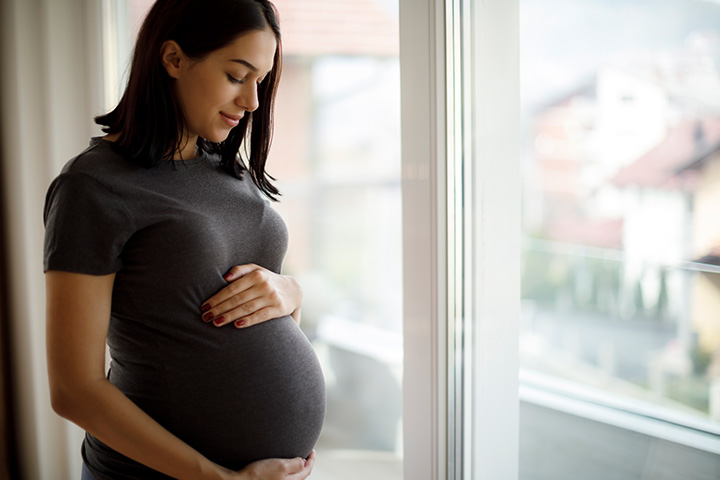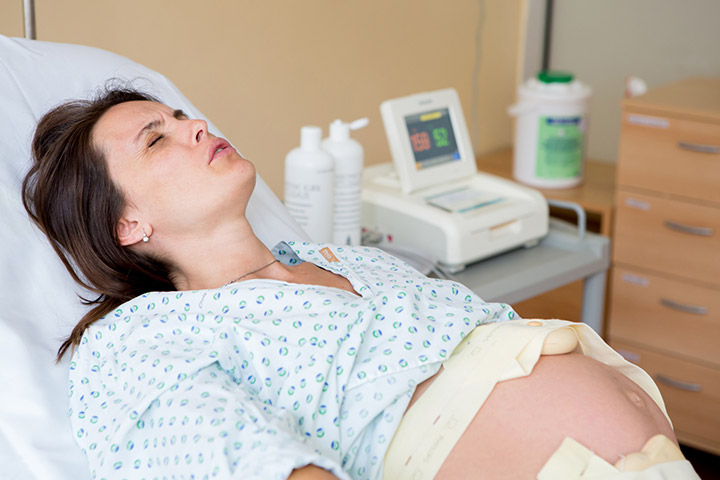
Image: Shutterstock
As biological evolution would have it, a woman’s body is naturally structured for childbearing. There are no surprises there. Which is why when you come across terms such as ‘childbearing hips’ it becomes increasingly confusing to understand what they really mean. Well, worry no more. We are here to have a quick chat about this term that gets thrown around so often that it could be a daily soap show. We answer all your questions: What does childbearing hips mean? Do different types of pelvic shapes influence childbirth? And does it actually make any difference in your childbirth experience?
What Exactly Are ‘Childbearing Hips’?
Image: Shutterstock
Let’s get some biology in the picture. Women have a bony basin or more commonly referred to as the pelvic area, which allows the fetus to sit and develop for the entire duration of the pregnancy. This bony basin slowly shifts to prepare for childbirth. As the fetus develops, so does your body to accommodate for these changes—it’s like clockwork. Now, every woman has a different pelvic structure, some have it wide which reflects in wide hips whereas some have a narrower basin which gives visually narrower hips. The term ‘childbearing hips’ is usually used while referring to a woman who visually has wider hips due to a wider pelvic bone structure. It is actually referring to the basin structure that you are naturally born with rather than your actual hips (1).
It is important to note that ‘childbearing hips’ are not a special quality that some women have or something that can be developed or changed with time. Instead, it is an inherent body ratio that you are born with, almost like your height. However, the question still remains—does the shape of your pelvic bone structure influence your childbirth experience?
Do Different Types of Pelvic Shapes Influence Childbirth?
Image: Shutterstock
Earlier research in the 1930s conducted by the Journal of the Royal Society of Medicine, titled Anatomical Variations in the Female Pelvis, established that the pelvic basin of a woman could be classified into four broad categories (2). However, these four categories have found disapproval from current researchers due to their limited categorization. However, to understand whether these ‘childbearing hips’ have any influence on childbirth, it is first important to understand the various categories of pelvis shapes.
Image: IStock
1. The Gynecoid Pelvis Shape
The top of our list is also the most common basin shapes found in women- the Gynecoid Pelvis Shape. This shape is known for facilitating an easy and natural birth in most women. The Gynecoid Pelvis Shape is wide and shallow, which assists the fetus through the birthing canal during childbirth. Yes, we know that is a lot of science. We’ll simplify it for you now. In simpler words, a shallow and wide pelvic structure allows more room for the fetus to grow in during the pregnancy and eventually push out during the birthing process. Thus, making this the most favorable bone structure.
This also means that, if you remember someone mentioning that you had great ‘childbearing hips’, then it is likely that you have a Gynecoid Pelvis Shape. Women with such a pelvic structure are usually curvy around their hips and tend to collect fat on thighs rather than their midriffs.
2. The Anthropoid Pelvis Shape
The Anthropoid Pelvis is another commonly found basin structure in women. However, unlike the Gynecoid Pelvis Shape that is wide from left to right, this pelvic structure is wide from back to front. Since the room for the fetus is less in an Anthropoid Pelvis, the childbirth experience is not easy. Here, the labor tends to be slightly difficult (as if it wasn’t difficult already!) and tends to last a little longer.
Women with an Anthropoid Pelvis Shape collect more weight around their abdomen and butt. If you have such a basin shape, doctors are likely to recommend certain activities such as squatting, or walking that could help ease the labor.
Image: Shutterstock
3. The Android Pelvis Shape
Commonly found in taller women with a narrow pubic arch and small butt muscles. This basin structure is narrow in the front and found to have a heart-shaped brim and therefore, a triangular shape. The Android Pelvis Shape makes it difficult to pass large babies through the birth canal and consequently lead to cesarean birth. However, this does not rule out the chances of natural birth! If natural birth is considered, then the doctor is likely to recommend a lot of movement during the birthing process. During childbirth, it is highly likely for you to need to push harder and for longer.
4. The Platypelloid Pelvis Shape
With this type of pelvic basin, the ischial spines are prominent with a wide sub-pubic arch that leads to a flattened shape at the inlet with a prominent sacrum. Yes, too much biology—sorry! Essentially, with this type of bony basin, the sub-pubic part of the basin is narrower than the others. Accordingly, if you have a Platypelloid Pelvis Shape, you may undergo longer labor since the baby may take longer to enter into your pelvic area. However, once the fetus settles or enters the pelvic area, the labor becomes much much easier.
Now the real question still remains unanswered.
Do Childbearing Hips Actually Ease Up The Birthing Process?
Image: Shutterstock
It is important to understand that the childbirth experience involves and is an outcome of several aspects such as the health of the mother, the fetus, the position of the fetus during labor, the size of the fetus’s head, and so on! Every woman has a body that is naturally evolved to experience childbirth and accordingly, a particular shape of the pelvis cannot substantially affect or decide the type of delivery a pregnant woman undergoes. Irrespective of the pelvic shape, a woman can still have a natural delivery or a C-section.
Image: IStock
Like we mentioned before, as the pregnancy progresses and the fetus develops, so does your body! The closer you get to your due date, your body starts preparing for labor. As a part of this preparation, the pelvic starts to stretch and relax—to facilitate the movement of the fetus through the birthing canal. Slowly, the bone around your pelvic starts to separate in preparation to push the fetus out of the womb (3). However, it is important to remember that such separation is only temporary and does not change the bone structure of your body.
So, if you are still wondering whether women with so-called ‘childbearing hips’’ have easy labor, the quick and simple answer ranges between a yes and most likely. This is because the pelvic allows more room for the baby. However, the more important aspect to remember is that hips cannot solely determine the entire pregnancy. Sure they might give an added advantage, but it is menial compared to the struggle and joy of the entire pregnancy. Many more important factors contribute to easing the birthing process. This also means that mothers with ‘childbearing hips’ can just as easily have difficulty during labor due to several other unfortunate complications. The term childbearing is misguided—your pelvic shape does not affect your childbearing abilities, it only affects the last stage of your pregnancy, that is the labor.


















